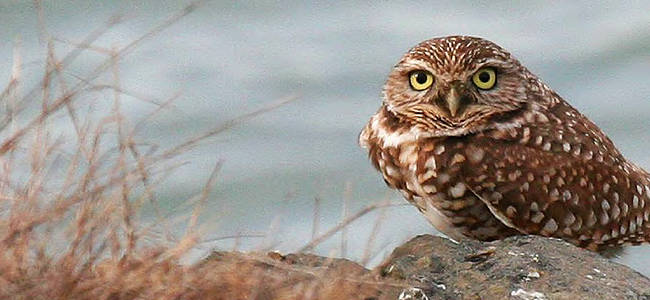
Our Vision
When Meriwether Lewis and William Clark traveled across the Great Plains region two hundred years ago, they encountered “one vast plain in which unnumerable herds of Buffalow were seen attended by their shepperds the wolves.”[1] In addition to bison and wolves, this seemingly endless expanse of grass contained abundant elk, pronghorn, prairie dogs, grizzlies, prairie birds, swift fox, and much more, making it one of the most productive areas on earth.
The explorations of Lewis and Clark marked the beginning of great change for this North American Serengeti. Within a century, commercial hunters slaughtered millions of bison for their hides and meat, and Native Americans were pushed onto reservations. European settlers exterminated large predators to safeguard their domestic livestock and plowed native prairies to plant crops, opening land for homesteads, farms and livestock pastures.
Despite these considerable changes to the prairie landscape, significant tracts of the land and much of the wildlife of the Great Plains remain intact. Some remarkable habitat has never been plowed, and few species that existed in the region at the time of European settlement are extinct. However, the ecological role of several species, like black-tailed prairie dogs, bison, black-footed ferrets, wolves, and grizzly bears, has been largely eliminated across the region. Through management and conservation actions, portions of the Great Plains of the United States and Canada can be restored into a fully functional grassland ecosystem, replete with habitat to nurture healthy, viable populations of the grand icons: expansive bison herds, immense prairie dog towns, and even wolves and grizzly bears.
Ours is a vision for the future of the heartland of North America, a vision of a sea of grass supporting healthy wildlife populations and vibrant communities of people. Implementation of the vision will result in the broad-scale restoration of this once-great landscape. Accomplishing this will be testimony to a society prudent enough to recognize the necessity for such restoration and progressive enough to implement it.
The Mission
The mission of the Great Plains Conservation Network (GPCN) is to restore and maintain the native species, habitats and natural processes of the Great Plains.
Our strategy is to work in partnerships with those who live, work, and recreate in this region to identify and maintain the areas that best contribute to this mission. Through collaboration, we seek to prevent loss or fragmentation of these areas, restore wildlife where possible, and facilitate wildlife movement and other important processes.
To succeed, we must identify and link much larger areas than are designated for wildlife and natural habitat today. We must begin to think and to act on a different scale – the scale of natural processes (wildlife migrations, fire, hydrology) that transcend municipal and political boundaries.
The Program
GPCN is comprised of dozens of conservation groups, tribal organizations, and individuals who have recognized both the necessity and the advantages of coordinating their efforts on a scale that mirrors the area they seek to conserve. Within GPCN, science, public education, private sector initiatives, and advocacy are being employed to promote the GPCN vision and to enable, energize, and inspire participating organizations and individuals by linking their efforts to support that vision. By employing new tools to support conservation work, and by adopting mechanisms that foster the exchange of ideas and the coordination of action among participants, GPCN hopes to restore North America’s grasslands, and to ensure the continued survival and health of its wildlife, wildlands, and human societies.
[1] Meriwether Lewis, at the convergence of the Marias and Missouri Rivers, June 3, 1805.
Specific Features of our Vision for the Great Plains
We share a vision for the Great Plains that restores and preserves in perpetuity:
- A network of large, healthy grasslands and shrublands connected to the Rocky Mountains and neighboring grassland regions;
- Healthy populations of all native animals within these landscapes, including large herds of bison, pronghorn, and elk, as well as native carnivores and scavengers;
- Large, fully functioning colonies of prairie dogs and other important small grazers and their associated species such as raptors, small predators and grassland birds;
- Free-flowing rivers and abundant wetlands in their natural state carrying healthy populations of fish, migratory birds, beavers and all other native river and wetland species;
- Natural processes, including floods, fires, and animal migrations;
- Widespread areas where sustainable human economic activities support healthy people and native habitats and wildlife;
- Healthy human communities that benefit from and value these restored natural landscapes and the amenities they provide.
